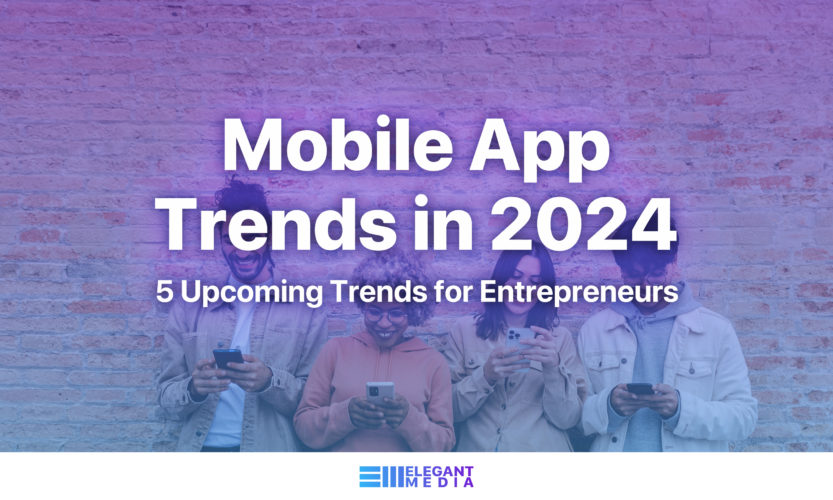2018 was a rapid-growth year in the tech space. With increased consumer and research spending, we expect this trend to continue throughout 2020 as well. Based on the growth and advancements in scientific research, the following are the main categories we believe that the largest business opportunities will arise.
1. Significant Improvements in Audio and Video-Based Artificial Intelligence
Audio and Video-based Artificial Intelligence (AI) has made significant improvements over the last two years. Google, Microsoft and IBM have now opened their AI platforms for public use, which makes AI projects much more affordable and accessible for tech-startups.
We’re also seeing increased spending in research by many large tech companies, which means this AI continue to grow. Google has even publicly stated they’re shifting their strategy from ‘mobile-first’ to ‘AI first’.
2. Augmented Reality Apps will Become Stronger
2018 was a key turning point for mobile-based Augmented Reality (AR). Until 2018, mobile app developers had to rely on third-party software packages to build AR applications – which resulted in ongoing licensing fees and very unreliable results. The new iOS and Android devices now have built AR support, which means we will be seeing a large number of creative uses of AR applications that were not possible before.
Unlike Virtual Reality (VR) – which is failing to gain much traction outside the tech world, we’re already seeing runaway successes in AR. For example, the Pokemon Go generated over $1.2 billion in revenue in 2017. Smart entrepreneurs who will capitalize and move in this space would be coming across many new opportunities for business growth.
3. Social Commerce and Mobile Influencer Marketing will Increase
With more people using social media, we’re likely to see a shift from traditional advertising to an increased spending in influencer-focused marketing. Retail chains such as Amazon, Walmart, Coles, Woolworths will still take the majority share in retail. However new opportunities are opening for big brands to collaborate with influencers in social media to increase their reach.
This opens new gaps for niche stores and marketplace apps to carve their audience and build a new business. Niche e-commerce apps should be using the powerful cross-channel integrations of social media to build and reach a viral following.
For many years, Google’s primary revenue generator was their Advertising Platform. With the introduction of Google Home range of products, we’re now seeing they’re making a shift towards a more social and a context-aware service model.
4. Higher Device Fragmentation will Lead to Better UX
In 2020, we expect to see a higher focus on high-quality design and improved User Experience (UX). We expect enterprise products give more focus to better usability and the design process, because any time saved by an improved process is an investment in employee productivity. We can also expect old applications (especially in the enterprise sector), to re-emerge with a better UI and UX.
Device fragmentation and layout issues are two of the main drawbacks in Android app development. Many developers had workarounds in creating dynamic layouts to fit the large range of Android hardware devices on the market. In iOS development, the developers were able to limit their resolutions to for the maximum size of retina displays and get around this limitation. Going forward, with the ‘notch design’ of iPhone X, we can assume Apple will be bold to introduce more quirky screen sizes. Therefore iOS developers will have to put more focus in paying attention to the UX process and implement Auto Layout that will suit many devices.
Therefore, more time will have to be spent on the design stage of an app, so that the designers can create better designs that will uniformly fit layouts across all device types.
5. Capital Expenditure on Mobile App Development will Increase
Most people assume that developing an app is similar to designing a website. However, the major difference is the control that you have over each platform. When you design a website, you can host it on a cloud server and you can potentially run it for over 10 years without any further investment in development or servers.
In contrast, mobile apps depend on many external services and systems which are beyond the control of a single person. These include external APIs, software libraries, cloud servers, physical devices and the operating systems itself. Both Apple and Google now update their mobile Operating Systems at least once a year. On top of that, new smartphones are getting released every few months as well. When these updates, combined with constantly changing external APIs and software libraries, you may need to update an app every 12 to 18 months to stay current and active.
Because a newly developed app needs to be physically tested on a number of iPhones, Android Phones, Tablets and iPads, even purchasing all these devices will become a hurdle for many enterprises who would like to develop apps for the first time. Therefore, we expect many enterprises seek the services of development agencies to build the initial version of their apps – so that they can run a pilot project and seek further budget approvals.
Conclusion
We expect to see continued growth in AI and AR segments in the coming few years. Entrepreneurs and developers will have to put more focus on the design as well as the distribution (or marketing) from the early stages to stay competitive. With the higher number of devices now available for both iOS and Android, we could see capital expenditure in both development and maintenance to increase during the next few years.











